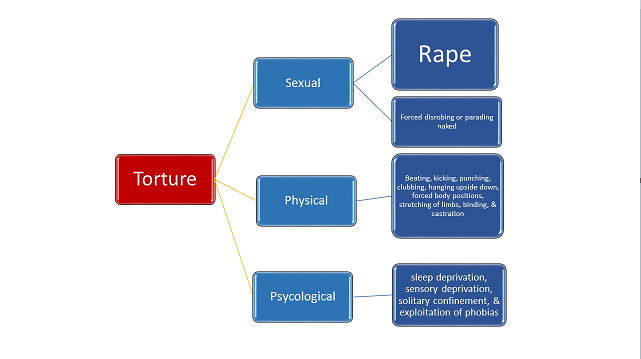The Pakistan desk of Asian Human Rights Commission has this time comes out with animated video on custodial torture which is discussing the menace of torture in the country. This video covers the practice of torture and ill-treatment in three parts.
Human rights can be rooted in a society only when the ethical and moral foundations of that society are compatible with human rights concepts, norms, and standards.

Torture is the denial of basic human rights to the victims who have been detained and interrogated, often even when commission of crime has not been proven. The custodial torture is considered a norm of criminal investigation in Pakistan. Wherever there is torture, there is an underdeveloped criminal investigation system.
In Pakistan, there is a general acceptance of torture as a tool to extract information and collect evidence amongst stakeholders, particularly policy makers in the government. Because of common practice torture legitimizes violence and thus makes abjuring violence impossible; general abhorrence of violence is a precondition for a peace-loving society.
Pakistan is among those countries where torture is used as a systematic instrument to extract evidence from suspects accused of different crimes. The Thana culture is deeply entrenched in our criminal justice system since the pre-independence era to maintain the writ of the State.
While people have to pay bribes to get an FIR registered, the investigation process is full of flaws and those responsible for conducting investigations are incompetent and dishonest. In fact, majority of low-ranking police officials have close links to professional criminals..Due to lack of legal prohibition for the heinous act of torture, it is rampant and practised by all law enforcement agencies, without exception, with impunity.
Sadly, law makers in Pakistan have failed to enact an anti-torture act despite Pakistan being a signatory to the United Nation Convention Against Torture (UNCAT).
Torture can be sexual, physical or even psychological, with examples of sexual torture including rape, forced disrobing, and parading of the victim naked; examples of physical torture including severe beating, kicking, punching, clubbing, hanging upside down, forced body positions, stretching of limbs, binding, and castration; and examples of psychological torture including sleep deprivation, sensory deprivation, solitary confinement, and exploitation of phobias.